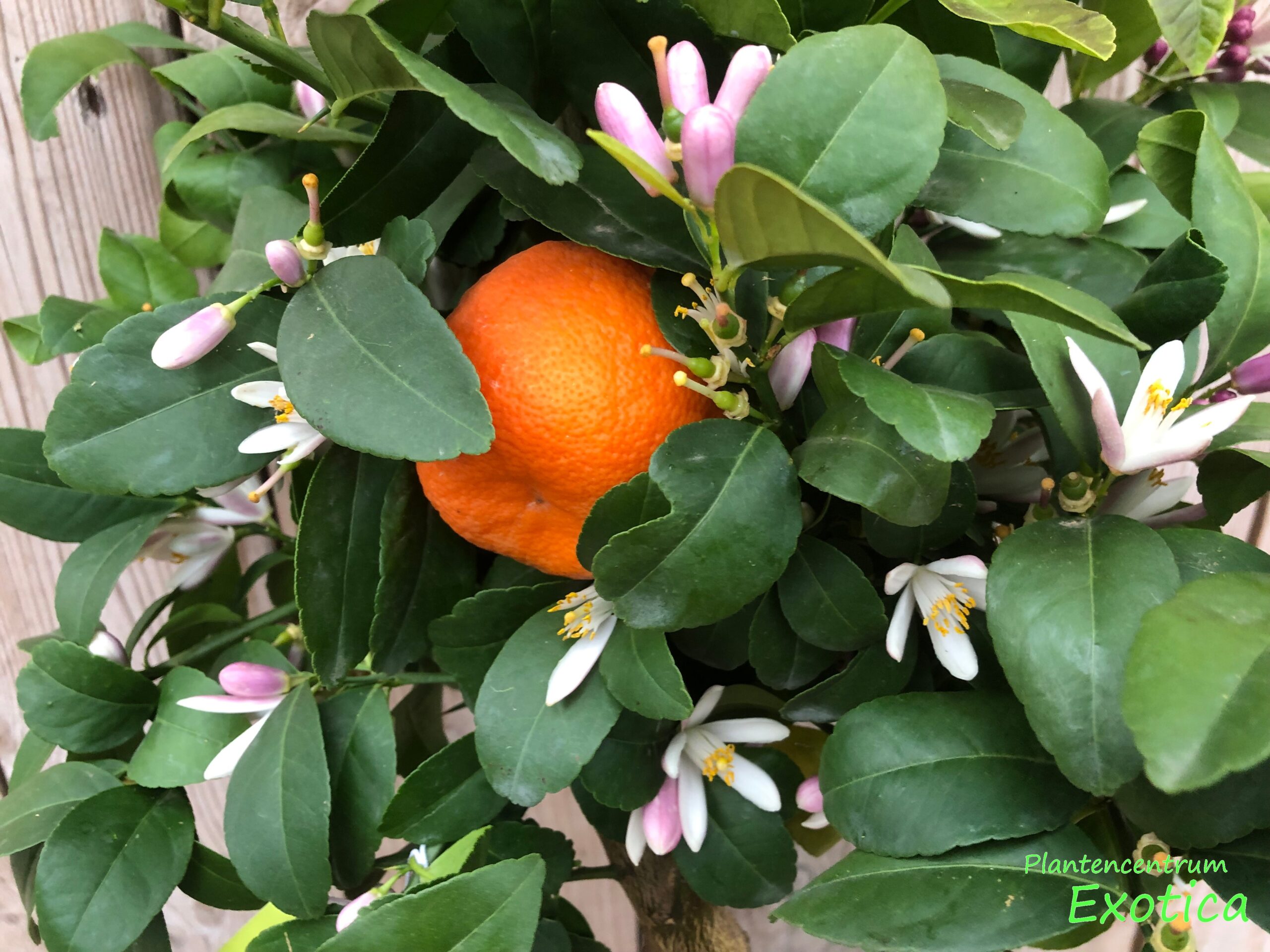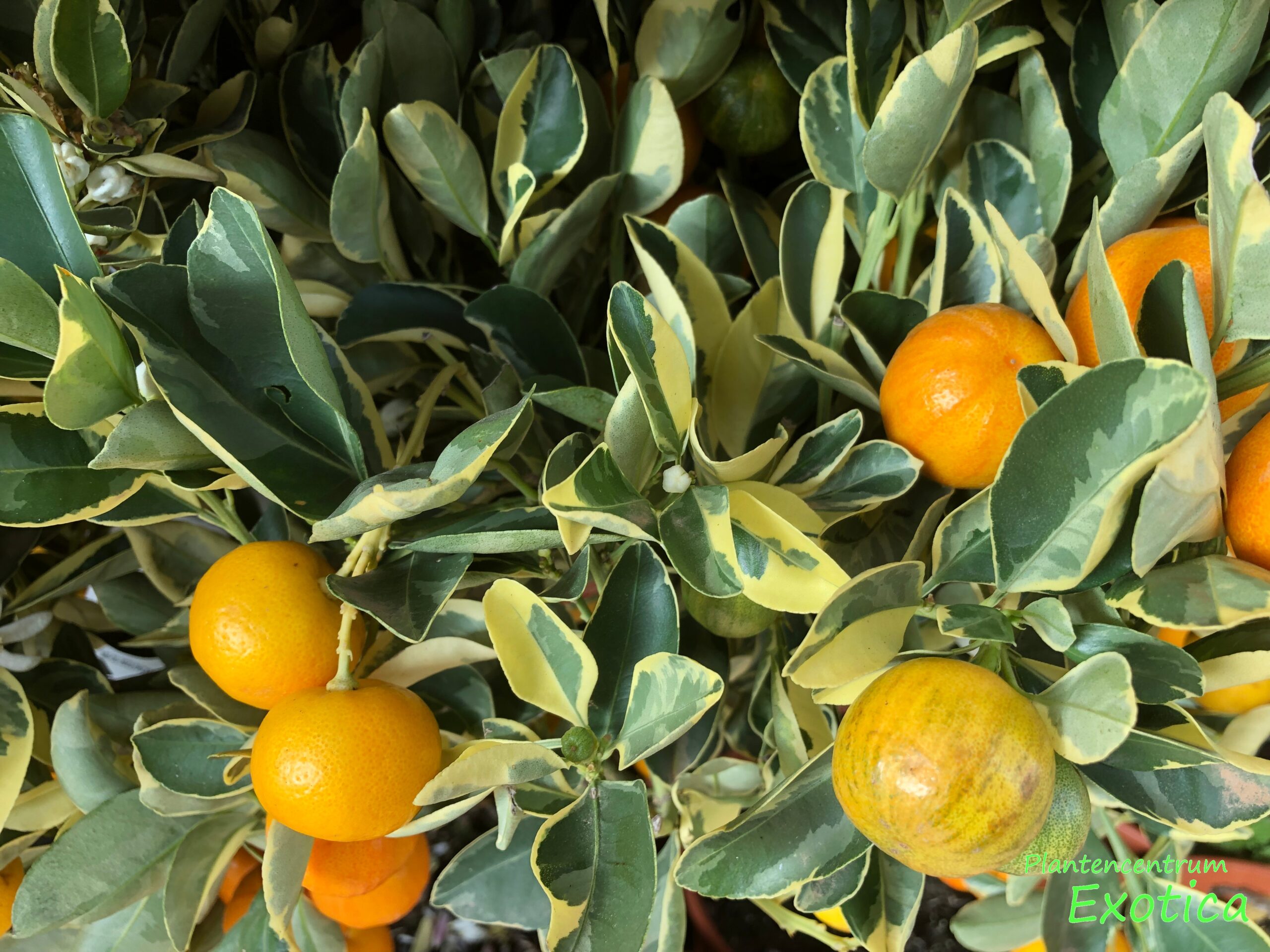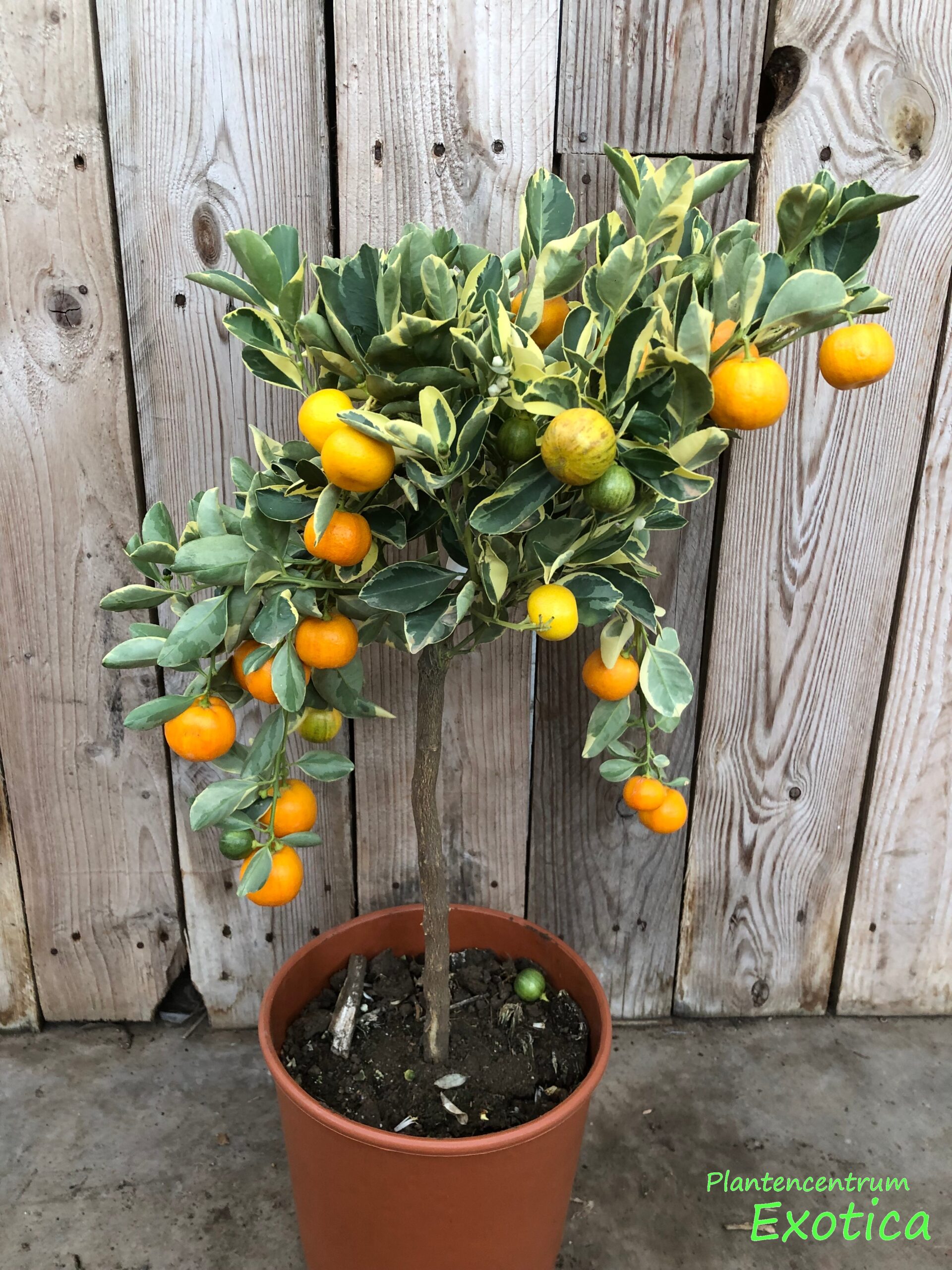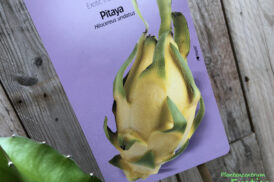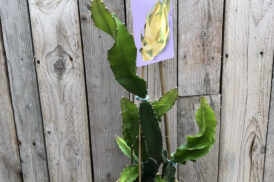Citrus Mitis Calamondin variegata
€42.50
| Min Temp : | +5°C |
| Location: | Sunny |
| Water requirements : | Moderate |
| Flowering period : | 3-10 |
| Scented : | No |
| Edible: | Yes |
| Use: | Container / Terrace plant |
| Evergreen: | Yes |
| Height: | up to 6m |
Description
Citrus mitis, known as calamondin or calamondino, is a citrus plant grown for its small, round fruits that resemble mini oranges.
The Calamondin is believed to have originated in China or the Philippines and is now widely cultivated in various tropical and subtropical regions around the world. It is especially appreciated in Southeast Asia and the Philippines.
The Calamondin is a small, evergreen shrub or tree that usually reaches a height of 1.5 to 3 meters. The fruits resemble small oranges and have a diameter of about 2-4 centimeters. They have smooth, thin skin that can be orange to orange-red in color when ripe.
The fruits of the Calamondin have a sour taste similar to that of a lime or tangerine. The skin is also edible and adds to its flavor, which is often described as a combination of sweet and sour.
The Calamondin is used in various ways in the kitchen. The fruits can be eaten as snacks, and the juice can be used as a seasoning in dishes, dressings, sauces, and drinks. It is also used to make marmalade, jam, and preserve due to its high acidity.
In addition to culinary use, the Calamondin is also cultivated as an ornamental plant because of its decorative value. Its small, attractive fruits and glossy green leaves make it a popular choice for landscaping and as an indoor potted plant.
The Calamondin thrives in warm, humid climates and can be grown in subtropical and tropical regions. It requires a well-drained soil and regular watering. It can be grown both in the ground and in pots, making it suitable for gardens as well as balconies or terraces.
Overall, the Calamondin is a versatile citrus plant with both culinary and decorative uses, and its fruits add a unique flavor and look to diverse dishes and landscapes.
This variety has a variegated leaf, and variegated unripe fruits, with ripe fruits the variegated is faded.

